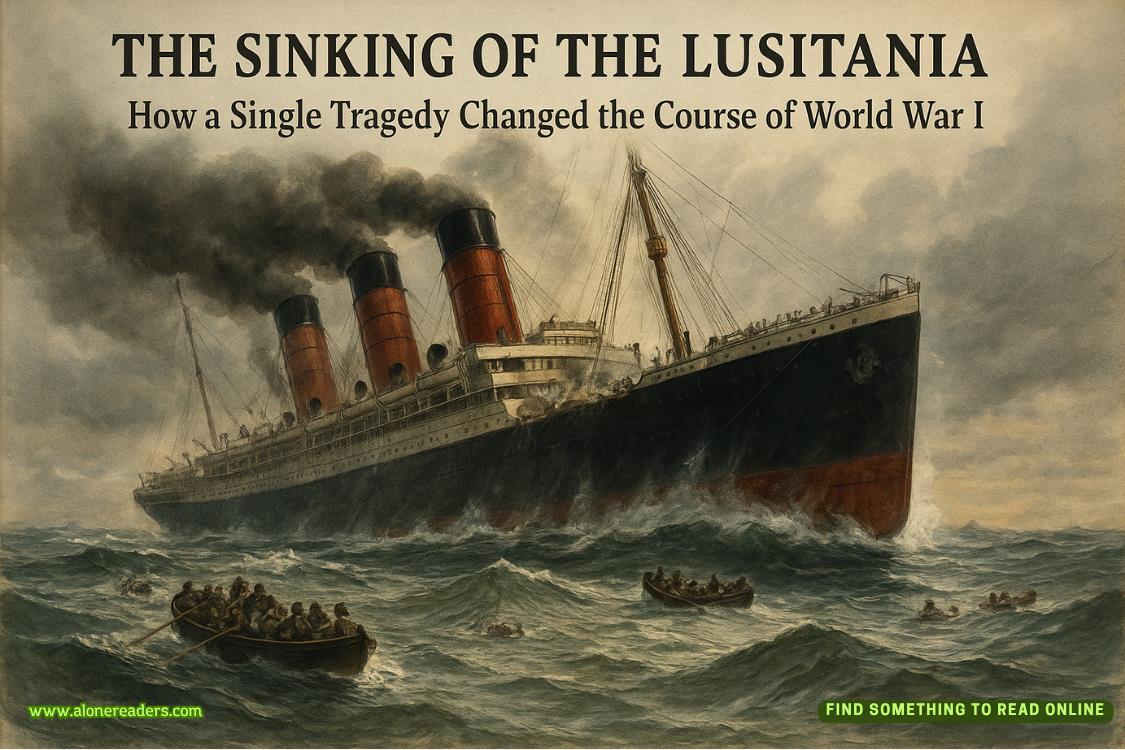Page 72 of What Happened to Lucy Vale
Allan Meeks recorded theme music, a deliberate rip-off of the ominous electronica that punctuatedBlood in the Waterwith reverb. Scarlett Hughes designed the thumbnail graphics for the Spotify page. Alex Spinnaker offered Skyler and her guests use of his basement recording studio, which had gone unused since his father’s alt-right political channel was suspended for violating YouTube’s terms of service.
We began to dream that we would solve the mystery of Nina Faraday’s disappearance once and for all. Forget Rachel Vale, a.k.a. R.C. Barnes. Rachel Vale was an outsider. An interloper. This wasourmystery. It had belonged to us since we were old enough to lay a hand on the gates outside the Faraday House and whisper that old rhyme into the garden, like an incantation or a prayer.
Nina, Nina, where did you go? Lydia, Lydia, what do you know?
That summer we dreamed of our very own Netflix special.
We launched the first episode, a searing criticism of the major players in the online movement to get #justiceforNina, in August. Our first target was Ellen Faraday, supposedly Nina Faraday’s long-lost aunt who’d recently started agitating for the reopening of Lydia Faraday’s case. She’d launched a GoFundMe campaign to pay for ongoing legal fees related to the investigation. Skyler didn’t turn up any hard proofthat “Ellen Faraday” was a con artist, but she did point to a suspicious history of similar fundraising efforts tied to Ellen’s cell phone number.
The episode was a hit, at least locally, and we all rode the wave of the new power it conferred. Suddenly there was a point to all our online sleuthing, our cyberwars and internet conspiracy theories. Suddenly we had anoutlet. A channel.
A voice.
Our Discord swelled with new members, and our mods set up new channels for tips, snark, and crowdsourced character assassination. The mission was simple: to discredit everyone seeking to discredit us.
No target was too big or too small. Skyler Matthews assured us that in journalism, as in war, it was important to be fearless, thorough, patient—and exacting. We trolled the internet and tracked the worst offenders: super-Redditor bloodhounder22, who obsessively posted about the Faraday case on r/ColdCaseFiles and had even launched a spin-off Discord that Alex Spinnaker and Meeks infiltrated to observe; ANONYM1698, the online troll who badgered club team swimmers online and made insidious accusations about the Steelers and the longtime culture of the swim team; Linda Harpe, the fifty-year-old PTA hawk and secretary of the Rockland County School Board who had threatened to go to war with Woodward over their abuse of the booster fund system; even Maria Ramirez, the Jalliscoe graduate who, years ago, had accused swimmer Will King of drugging and assaulting her, then recanted her accusations when her own drug use came to light, and now was repeating claims that had been widely discredited ten years earlier; and, of course, the producers ofBlood in the Waterand their small cabal of brainwashed followers.
Following the trail of suspicion and accusation across Reddit, Discord, and even Facebook, we sloughed layers of rumor from the facts about Nina Faraday’s final days in Granger and Lydia Faraday’s subsequent campaign against the Sharks. The internet was divided cleanly into three camps: people who believed Tommy Swift had killed Nina, people who thought Nina’s mother was to blame, and those whoinsisted that Nina Faraday had run off with a secret boyfriend who may or may not have killed her. Tommy Swift had the motive but no opportunity; Lydia Faraday had the opportunity but no apparent motive.
The only logical explanation, we agreed, was an unknown party. Likely a stranger. Possibly a covert boyfriend.
Definitely a psycho.
Not one of us.
Unwittingly we joined the legions of amateur detectives who’d determined to find #justiceforNina and became newly minted experts in the details of the case. On her last day at Woodward, Nina and Tommy reportedly had a blow-out fight in the cafeteria. Nina had accused Tommy of stalking her. Tommy had accused Nina of cheating on him. Afterward a tearful Nina had gone to her final class—a health elective taught by Coach Steeler—and been reprimanded for texting when she was supposed to be practicing CPR on a dummy. Police later determined that she had, in fact, been texting with her mother, a series of messages that later confirmed Lydia Faraday was pressuring her daughter to cut things off with Tommy completely and speak to Admin about his bizarre mood swings and possible use of steroids. A large and vocal corner of the internet held up this exchange as proof that Tommy was addicted to performance enhancers and desperate to prevent Nina from exposing him. An equally rowdy contingent argued that Lydia Faraday’s texts were proof of an extremely, even narcissistically overprotective mother, possibly indications of a woman who would kill her daughter rather than lose her to a boy.
YouTube links about toxic boyfriends, and mothers, abounded. Alex Spinnaker became an overnight expert on psychopathy. Sofia Young returned to Discord and suggested that her father was a sociopath. We came to the sudden collective realization that our childhoods had been toxic, that our parents’ questions were inappropriate intrusions on our God-given rights to privacy, that we were all victims just like Nina Faraday.
Unless, of course, Nina Faraday had run off with a boyfriend.
No one knew where Nina had been between final bell and the time Woody Topornycky saw her entering Aquatics just before 7:00 p.m. She’d skipped an after-school meeting of the Key Club and materialized briefly in the SLD Tutoring Center to ask a question about her chemistry homework. Her cell phone data later showed that she hadn’t left campus until seven thirty, when she texted her mother that she was heading home and then, an hour later, sent her final cryptic message to her ex-boyfriend. By then Lydia Faraday had arrived home to find her daughter missing.
Tommy Swift, meanwhile, had been alibied by every member of the swim team and by Coach Steeler himself. After a grueling after-school practice, the club team swimmers had reunited with all the high school Sharks at Coach Steeler’s house for a belated celebration of their championship season. Tommy Swift had opened the door to a pizza delivery guy with sixteen large pies and about an acre’s worth of salad at exactly 7:16 p.m., and Nina Faraday’s final text came in when Tommy was still planted in front of Steeler’s seventy-two-inch flat-screen TV, enjoying a slideshow of swim team highlights. The party didn’t end until close to 10:00 p.m., when Steeler shooed everyone home to get some sleep.
We dismissed the internet’s fantastical theories about Tommy’s “real” movements that night. But the rabbit hole of speculation brought us up against an unexpected problem: not everything that people were saying about the Sharks, and about Woodward, was off-the-wall lunatic.
In fact, some of it made an awful kind of sense.
The Sharksweregods at Woodward. The Steelersdidhave a lot of power in the Four Corners, including over the judicial system. Our swimmershaddodged a lot of trouble over the years. Itwassuspicious that Will King had illegal prescription drugs in his car, and itwasbelievable that he’d actually dosed his date. Would she really have planted drugs and made up the assault story to punish him, all because she’d graduated from a high school with a long-standing rivalry with the Sharks?
But just because a story was simple—just because it was easy to believe—didn’t mean it was true.
The truth was our swim team was under attack, and we were all Sharks in spirit. When there was blood in the water, we went for the kill.
Five
Rachel
The letters kept coming. Not with any rhythm or regularity, not with any pattern, but sporadically, even after Rachel installed a Nest security system and a series of not-so-subtle signs on the gates announcing that visitors were being filmed. At that point the letters, previously dropped off, began to arrive with postage stamps.
This made Rachel uneasy. Clearly they were being watched.
Nobody wants you here. You don’t belong.Over time the messages grew lengthier and more unhinged.You and your daughter justLovethe attention, don’t you? Isn’t that why you chose to live in a houseCondemned by evil? God have mercy on your sinning souls.The day after Rachel attended a contentious town board meeting to discuss the dedication of the new Aquatics pavilion to Jay Steeler, she received a lengthy Bible verse:There are six things that the Lord hates, seven that are an abomination to him: haughty eyes, a lying tongue, and hands that shed innocent blood, a heart that devises wicked plans, feet that make haste to run to evil, a false witness who breathes out lies, and one who sows discord among brothers.
She thought back to the crowd that packed the small first-floor room at Town Hall. They were there to agitate for or against the new memorial pavilion. Was the culprit there? They must have been. Itoccurred to her that there might be more than one sender. She started imagining that people were looking at her strangely. That the woman who rang up her groceries gave her an odd smile. That Dale, their mail carrier, avoided meeting her eyes. That Mrs. Kowalski’s curtains swished whenever Rachel drove by as if she was monitoring her movements from the window.
She took the letters to the police—not because she expected help or sympathy but because she had the sense that she would someday need the complaint on record. That it might prove important. Just in case. In case ofwhat, she couldn’t say. But she couldn’t help thinking about the deluge of hate mail that Lydia Faraday had received even after her only child had gone missing—despicable letters accusing her of murder, of deliberately trying to implicate Tommy Swift, of a complex plot to exact revenge against Jay Steeler all because of a lingering obsession that dated back to high school. Some of the letters had been published online, leaked after Lydia’s death by her family members. Rachel scoured them, looking for similarities. She couldn’t help but wonder whether the same person—or people—had selected her as their new target sixteen years later.















